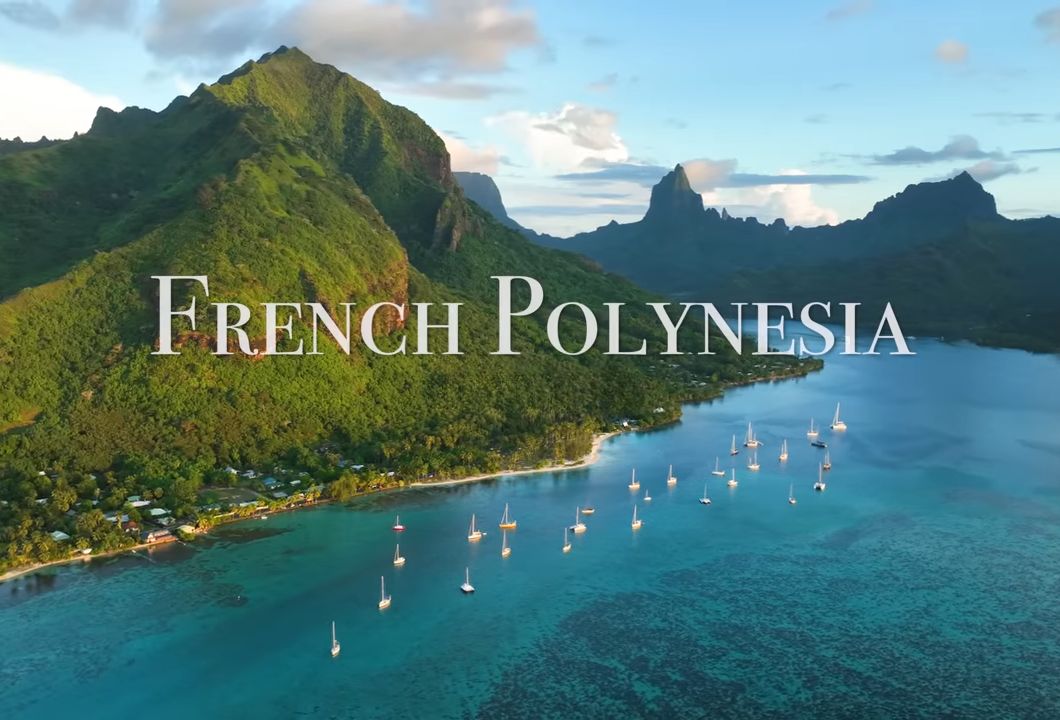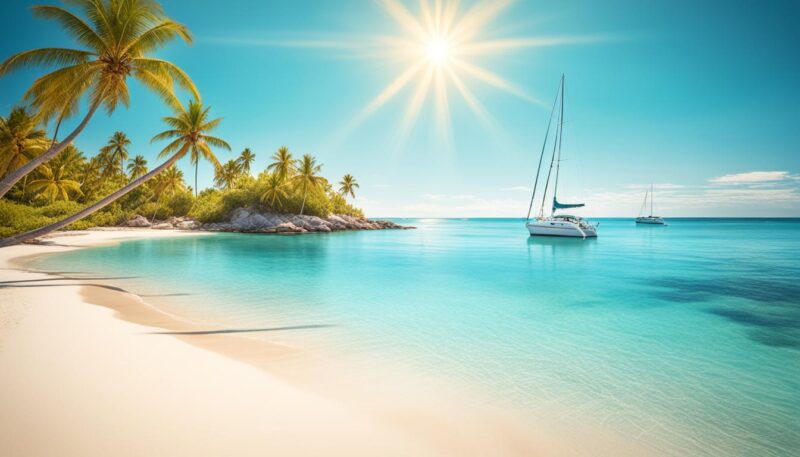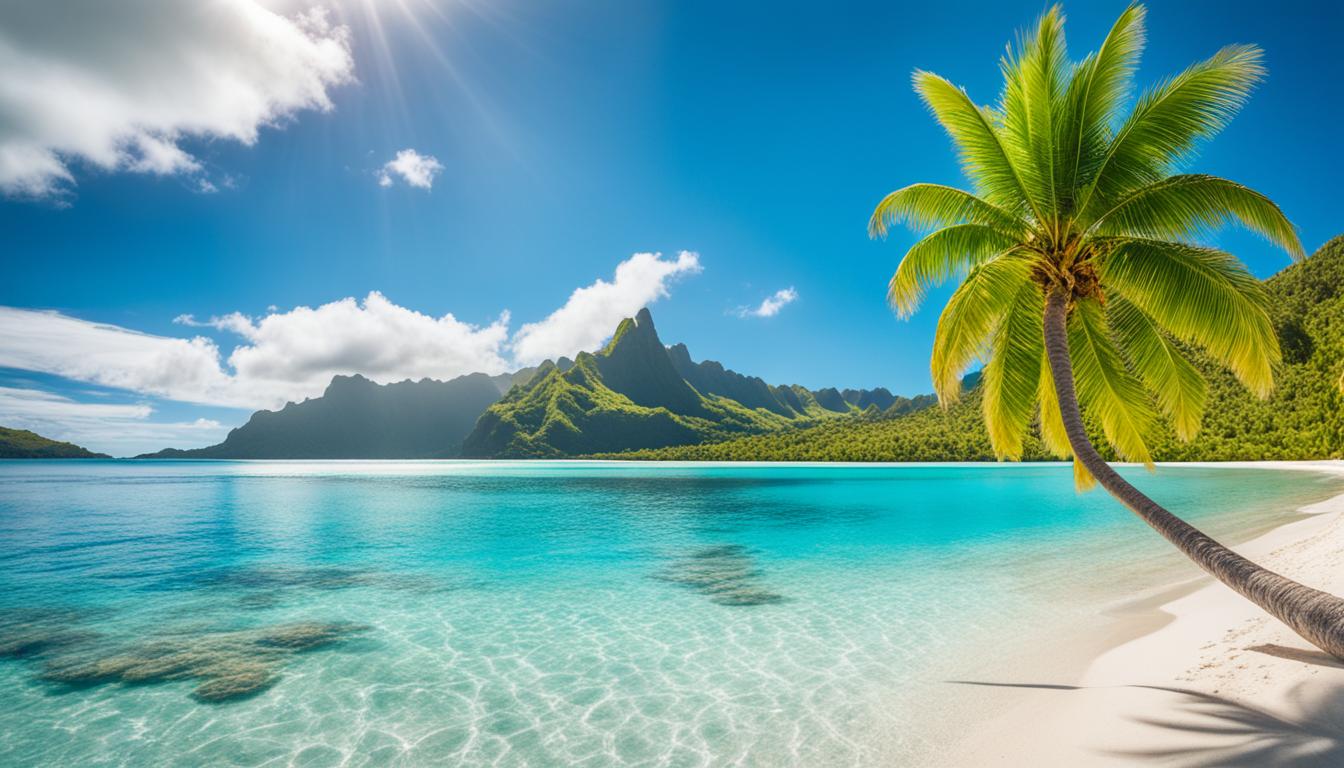Welcome to French Polynesia, a tropical paradise in the South Pacific. With its breathtaking landscapes, crystal-clear waters, and vibrant culture, it’s no wonder that this destination is on the bucket list of many travelers. But did you know that the climate of French Polynesia can vary significantly throughout the year?
Imagine, for example, planning a dream beach vacation only to be caught in torrential rainstorms for a large portion of your trip. It’s not the ideal scenario, right? That’s why understanding the best time to visit French Polynesia is crucial.
Let’s take a closer look at the climate patterns, weather conditions, and tips to help you plan your trip to French Polynesia with confidence.
Key Takeaways
- The best time to visit French Polynesia is between June and August, when the weather is dry and the temperatures are comfortable.
- May and September are also great months to visit, with fewer tourists and pleasant weather.
- Consider the specific weather patterns of each island when planning your trip.
- Pack light, breathable clothing, swimsuits, sunscreen, and comfortable shoes for exploring.
- Don’t forget rain gear, as showers can occur unexpectedly.
Monthly Climate Guide for French Polynesia

The climate in French Polynesia varies slightly between the different islands. To plan your trip effectively, it’s essential to consider the monthly weather patterns across the region. Here’s a breakdown of the average temperatures and rainfall for some of the popular islands in French Polynesia.
Bora Bora
In Bora Bora, the temperatures range from 28-31°C (82-88°F) throughout the year. The island experiences varying levels of rainfall, so it’s advisable to carry appropriate rain gear when visiting.
Marquesas Islands
The Marquesas Islands have a similar climate to Bora Bora, with temperatures ranging from 28-31°C (82-88°F) year-round. The rainfall pattern is also comparable, so it’s important to be prepared for any potential showers.
Moorea
Moorea, known for its breathtaking landscapes, has temperatures ranging from 27-30°C (81-86°F) throughout the year. However, the island experiences higher rainfall during certain months, which should be taken into consideration when planning your visit.
Tahiti
Tahiti, the largest and most populous island in French Polynesia, sees temperatures ranging from 23-26°C (73-79°F). Similar to Moorea, it also experiences higher rainfall during certain months.
Tuamotu Islands
The Tuamotu Islands have temperatures ranging from 28-30°C (82-86°F) throughout the year. While the temperatures remain consistent, the levels of rainfall vary across the months, requiring travelers to plan accordingly.
These variations in temperature and rainfall across the various islands demonstrate the unique climate characteristics of French Polynesia. By referring to this monthly climate guide, you can make informed decisions when planning your vacation and ensure a memorable experience in this stunning destination.
Best Travel Seasons in French Polynesia
When planning a trip to French Polynesia, it’s important to choose the ideal time to visit in order to make the most of your experience. The best seasons to travel to this stunning destination are May and September. These months offer pleasant weather with a lower chance of rain and fewer tourists, compared to the peak season. Whether you’re looking for a romantic getaway or a peaceful escape, May and September provide the perfect conditions for an unforgettable vacation.
If you’re looking to add some enchantment to your trip, consider coinciding your visit with the full moon. The islands of French Polynesia become even more captivating at night when the moon’s illuminated light reflects on the sparkling lagoons and inlets, creating a magical ambiance that is truly mesmerizing.
On the other hand, if you’re seeking a more budget-friendly option or prefer quieter surroundings, the period from January to April can be an excellent choice. This time of year falls within the wet season, with heavier rainfall and higher humidity. While you may experience some rain showers, it also means that hotels tend to be emptier, rates are more competitive, and there are fewer visitors exploring the islands. Plus, you might have the opportunity to witness the vibrant celebrations of the Chinese New Year, which usually takes place in January or February.
To help you plan your trip effectively, take a look at the table below for an overview of the weather conditions throughout the year in some of the key destinations of French Polynesia:
| Destination | Temperature (°C) | Rainfall |
|---|---|---|
| Bora Bora | 28-31 | Varies |
| Marquesas Islands | 28-31 | Varies |
| Moorea | 27-30 | High during certain months |
| Tahiti | 23-26 | Higher rainfall |
| Tuamotu Islands | 28-30 | Varies |
As you can see, each destination within French Polynesia has its own unique climate patterns. When planning your itinerary, it’s essential to consider these variations to ensure you make the most of your time in paradise.

By choosing the best time to visit French Polynesia, you’ll be able to immerse yourself in the beauty of its pristine beaches, crystal-clear waters, and vibrant culture. Whether you’re seeking idyllic relaxation or thrilling adventures, French Polynesia offers a truly unforgettable experience year-round.
Essential Packing Tips for French Polynesia
When visiting French Polynesia, it’s important to pack for the tropical climate. After all, you don’t want to miss out on the beautiful beaches and outdoor adventures that await you. Here are some essential packing tips to ensure you have everything you need for a memorable trip.
- Swimsuits: Pack a few swimsuits so you can fully enjoy the picturesque beaches and crystal-clear waters of French Polynesia.
- Stylish cover-ups: Don’t forget to pack some stylish cover-ups to protect your skin from the sun and to wear when you’re walking around the islands.
- Sunscreen: The sun can be intense in French Polynesia, so make sure to pack a high SPF sunscreen to protect your skin from harmful UV rays.
- Sunhats and sunglasses: Keep your face and eyes shielded from the sun with a wide-brimmed sunhat and a pair of sunglasses.
- Lightweight and breathable clothing: Opt for lightweight and breathable clothing made of cotton or linen to stay cool and comfortable in the tropical climate.
- Comfortable shoes: Pack a pair of comfortable shoes for walking and exploring the beautiful islands of French Polynesia.
- Waterproof sandals: When you’re not in the water, a pair of waterproof sandals will come in handy for beach activities and boat trips.
- Lightweight pants and hiking shoes: If you’re planning to trek or explore the island’s interiors, pack lightweight pants and hiking shoes for comfort and protection.
- Insect repellent: Don’t forget to pack insect repellent to keep those pesky mosquitoes away during your outdoor adventures.
- Water bottle and towel: Stay hydrated by packing a reusable water bottle, and don’t forget to bring a lightweight towel for beach outings.
- Rain gear: While French Polynesia is known for its sunny weather, showers can occur unexpectedly. Be prepared with a packable rain jacket or umbrella.
By packing these essential items, you’ll be well-prepared to make the most of your trip to French Polynesia. Whether you’re lounging on the beach, exploring the islands, or embarking on outdoor adventures, you’ll have everything you need to enjoy your tropical getaway.
Packing Checklist for French Polynesia
| Essentials | Clothing | Accessories |
|---|---|---|
| Swimsuits | Lightweight and breathable clothing | Sunscreen |
| Stylish cover-ups | Comfortable shoes | Sunhats |
| Sunscreen | Waterproof sandals | Sunglasses |
| Sunhats | Lightweight pants | Insect repellent |
| Sunglasses | Hiking shoes | Water bottle |
| Lightweight and breathable clothing | Towel |
Conclusion
French Polynesia offers a diverse range of travel experiences, with each month bringing its own climate characteristics. The best time to visit is between June and August, when the weather is dry and temperatures are comfortable. However, other months also have their own appeal, such as May and September, with fewer tourists and pleasant weather.
When planning a trip to French Polynesia, it’s important to consider the specific weather patterns of each island and pack accordingly. By following the climate tips provided and packing sunscreen, lightweight clothing, and waterproof sandals, travelers can make the most of their visit to this stunning destination.
Whether basking in the idyllic beaches of Bora Bora, exploring the lush landscapes of Moorea, or immersing in the vibrant celebrations of Chinese New Year, French Polynesia promises unforgettable experiences year-round. If you liked this article, be sure to also check out our article about: Ideal Cook Islands Trip
FAQ
When is the best time to visit French Polynesia?
The best time to visit French Polynesia is between June and August when the climate is driest and the weather is balmy. The temperatures during this time range from the high 20s to mid-30s Celsius (mid-70s to mid-90s Fahrenheit).
Are there any months with lower prices and comfortable temperatures?
Yes, the months either side of June to August also offer comfortable temperatures, but with lower prices compared to the peak season.
What is the climate like in French Polynesia?
The climate in French Polynesia varies slightly between the different islands. The temperatures range from 23-31°C (73-88°F) with varying rainfall patterns throughout the year.
When is the wet season in French Polynesia?
The wet season in French Polynesia is from January to April, with heavier rainfall and higher humidity. However, this can also mean emptier hotels, competitive rates, and fewer visitors.
What is the significance of visiting during the full moon?
It is recommended to coincide a trip with the full moon, as the islands are particularly enchanting at night when the illuminated moon’s light catches the sparkling lagoons and inlets.
What should I pack when visiting French Polynesia?
When visiting French Polynesia, it’s important to pack swimsuits, stylish cover-ups, sunscreen, sunhats, sunglasses, lightweight and breathable clothing made of cotton or linen, comfortable shoes, and waterproof sandals. If planning to trek or explore the island’s interiors, lightweight pants, hiking shoes, insect repellent, a water bottle, towel, and rain gear are also recommended.
Are there any specific travel experiences during certain months?
Yes, Chinese New Year in January or February brings vibrant celebrations to the islands, making it an exciting time to visit.
